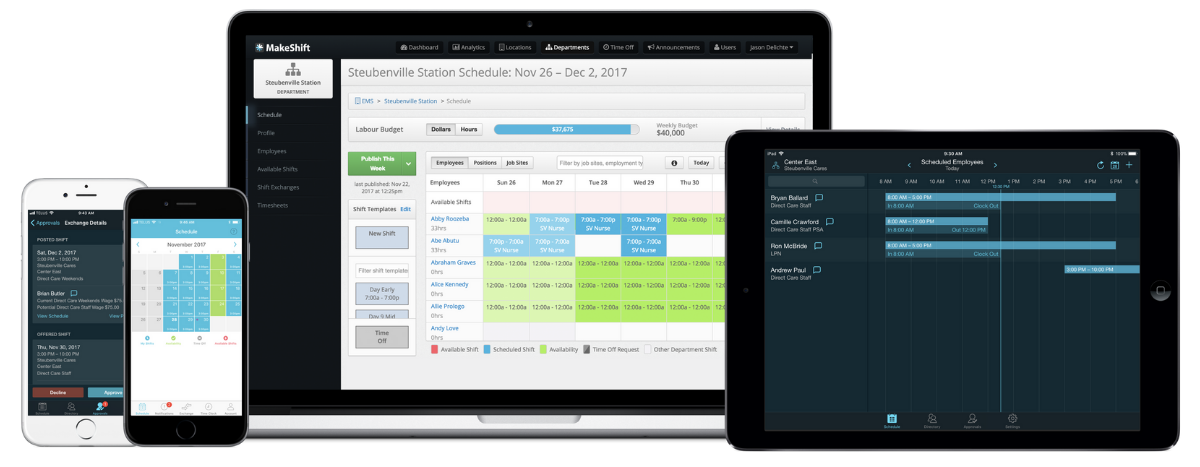Healthcare workers, especially nurses, are prone to burnout because of increasing patient numbers, staffing shortages, and stressful working conditions.
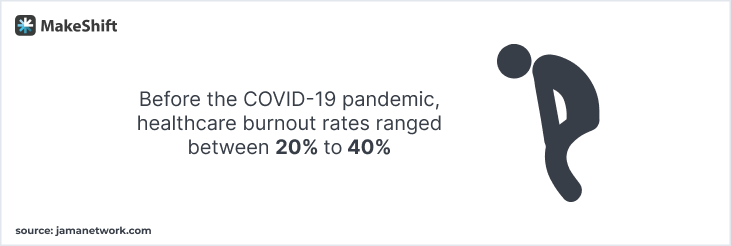
Before the COVID-19 pandemic, healthcare burnout rates ranged between 20% to 40%, with higher rates in emergency medicine and intensive care units. The pandemic amplified burnout rates, and nurses are more stressed than ever.
While employee burnout is problematic in any industry, it can lead to fatal consequences in healthcare due to mistakes in patient care.
So how can you adapt your medical practice to better support your nurses? And what can you do to deal with the long-term effects of nurse burnout?
This guide explains how you can prevent nurse burnout with 5 powerful tips.
- What is Nurse Burnout?
- Signs of Nurse Burnout
- Causes of Nurse Burnout
- How Does Nurse Burnout Affect Patient Care?
- 5 Tips on How to Prevent Nurse Burnout
What is Nurse Burnout?
Nurse burnout is a disorder caused by chronic stress that goes unmanaged, making it difficult for nurses to perform their jobs. More specifically, nurse burnout is a widespread phenomenon caused by a lack of motivation, emotional exhaustion, and feelings of frustration.
If you don’t address nurse burnout, it can lead to hopelessness, cynicism, and even depression. Therefore, it’s crucial to identify the signs of nurse burnout early and offer preemptive solutions to prevent burnout in the first place.
Nurses keep the heart of your healthcare organization beating because they spend the most time with your patients. However, if your nurses are mentally strained, they won’t be able to offer practical and personable medical care to the patients.
Signs of Nurse Burnout
There are several warning signs to look for in regards to nurse burnout. If these symptoms are left untreated, it can lead to various health issues for the affected nurse and their patients.
The physical signs of nurse burnout include:
- Exhaustion
- Frequent illness and sickness
- Anxiety
- Muscle pain and headaches
- Change in appetite
- A discernable difference in sleep habits
On the other hand, the emotional symptoms of nurse burnout include:
- Detachment
- Lack of motivation
- A sense of failure and self-doubt
- Feelings of helplessness
- Cynicism
- Dissatisfaction in life and career
- Negativity
Furthermore, the behavioral symptoms of nurse burnout include:
- Increased absences from work
- Substance abuse
- Tendencies to self-isolate and withdraw
- Poor decision making
If you notice any of these symptoms among your workforce, it’s important to address them head-on. You and your staff should have open lines of communication where they’re comfortable speaking to someone about issues they face.
You should treat your staff as a team and offer all the support they need to remain happy, positive, and effective.
Causes of Nurse Burnout
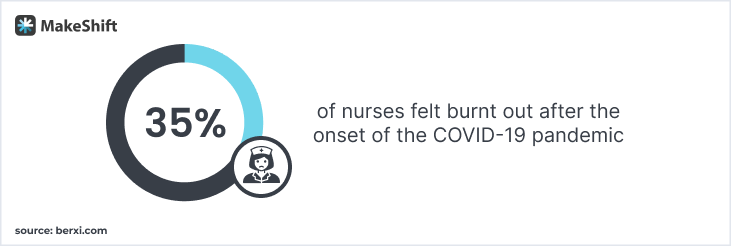
While any type of worker can face burnout, around 35% of nurses felt burnt out after the onset of the COVID-19 pandemic. Even before the pandemic, nurses were subject to high levels of burnout due to their unique working conditions.
A survey conducted by Nursing CE Central sheds light on the primary causes of nurse burnout:
- Low staffing: Over 80% of respondents cited low staffing as a key cause of burnout.
- Emotional exhaustion: Over 76% of surveyed nurses said emotional exhaustion played a crucial role in their burnout.
- High workload demands: More than 75% of nurses said heavy workload demands contributed toward feelings of burnout.
- Workplace culture and morale: 66% of respondents said poor workplace morale and culture contributed to burnout.
However, these aren’t the only causes of nurse burnout. Other factors include:
- Physical exhaustion
- Lack of respect in the workplace
- Pay and benefits
- Interruptions during off-hours
- Verbal abuse or bullying
- Scheduling flexibility
Nurses already work long and grueling hours. When there are staff shortages, they need to work even harder to tend to all their patients. This increased workload can lead to emotional exhaustion and physical exhaustion.
Furthermore, nurses must deal with death and sickness all the time. Although this is part of their job description, that doesn’t mean it doesn’t take its toll and become overwhelming. Taking care of ill patients day-in and day-out can eventually add up and lead to nurse burnout.
How Does Nurse Burnout Affect Patient Care?
According to Incredible Health, the leading causes of nurse turnover are burnout and stressful working conditions. Turnover leads to staffing shortages which further leads to worsened patient care.
Exhausted and mentally strained nurses are more likely to make poor decisions at work. In fact, nurse burnout correlates to higher rates of hospital-acquired infections. So not only are your nurses in danger if they burn out, your patients are too.
Nurses who face burnout may have difficulties following workplace guidelines, communicating effectively, preventing negative patient outcomes, and avoiding medical errors.
Therefore, distressed nurses operate under worsened conditions and put patients in danger. For example, burnt-out nurses can accidentally administer incorrect medication or dosages, record patient medical data incorrectly, or deliver impersonal care.
All these factors lead to declined patient care. As a healthcare organization, your patients are your absolute priority. If your patients aren’t being treated properly because of nurse burnout, it will deteriorate your reputation as a medical provider and lead to organizational-wide losses.
5 Tips on How to Prevent Nurse Burnout
Burnout substantially affects nurses, the organizations that hire them, and patients. Unfortunately, the COVID-19 pandemic intensified nurse burnout and shocked the healthcare industry.
Luckily, there are workplace prevention strategies your organization can use to prevent and reduce nurse burnout.
1. Deploy Innovative Scheduling Software
As I discussed earlier, the leading causes of nurse burnout are low staffing and long working hours. These factors are apparent when a healthcare organization uses ineffective staff scheduling systems.
For example, if your organization uses manual scheduling, creating an optimal schedule for your nurses is difficult. Therefore, nurse managers must create humane schedules for their staff, with a maximum shift length of 9 hours.
Healthcare organizations don’t have the luxury of managing demand. In addition, understaffing can lead to fatal consequences for your patients.
With scheduling software, you can prevent nurse burnout and understaffing, empower your workforce, and improve patient care.
Let’s discuss the key benefits of nurse scheduling software.
Flexibility
Nurses dedicate their lives to helping others. However, they also have their own personal obligations, so they need time off to support themselves and their families.
While you can recruit new nurses to manage staffing shortages, it’s not sustainable because of the cost and resources spent acquiring new workers. Supporting flexible schedules prevents nurse burnout.
Scheduling software made for healthcare, like MakeShift, can enable flexible schedules by:
- Allowing shift swaps so nurses who can’t work can swap directly with qualified team members
- Finding a coworker to cover extra shifts in case a nurse calls in with an emergency like death or sickness
- Providing adequate time-off, manageable work hours, workplace safety measures, and optimal staff-to-patient ratios
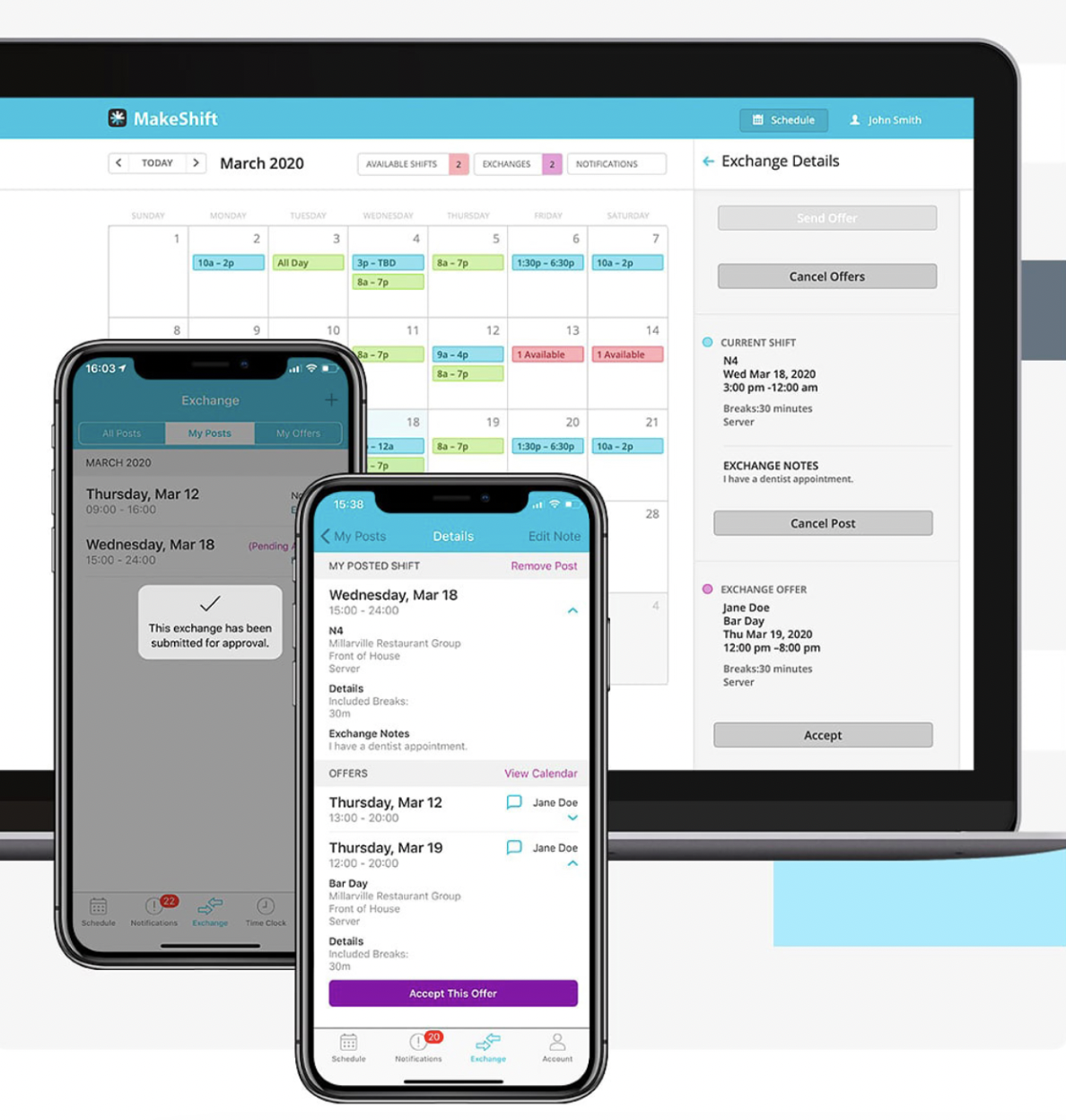
Scheduling flexibility empowers your workers to be in control over their work-life balance. It also contributes to better staff retention and lower turnover. These factors lead to improved patient care and deliver a stronger bottom line for your organization.
Predictability and Visibility
The days of manually preparing spreadsheets to schedule nurse work hours are behind us. It’s outdated and takes up too much time.
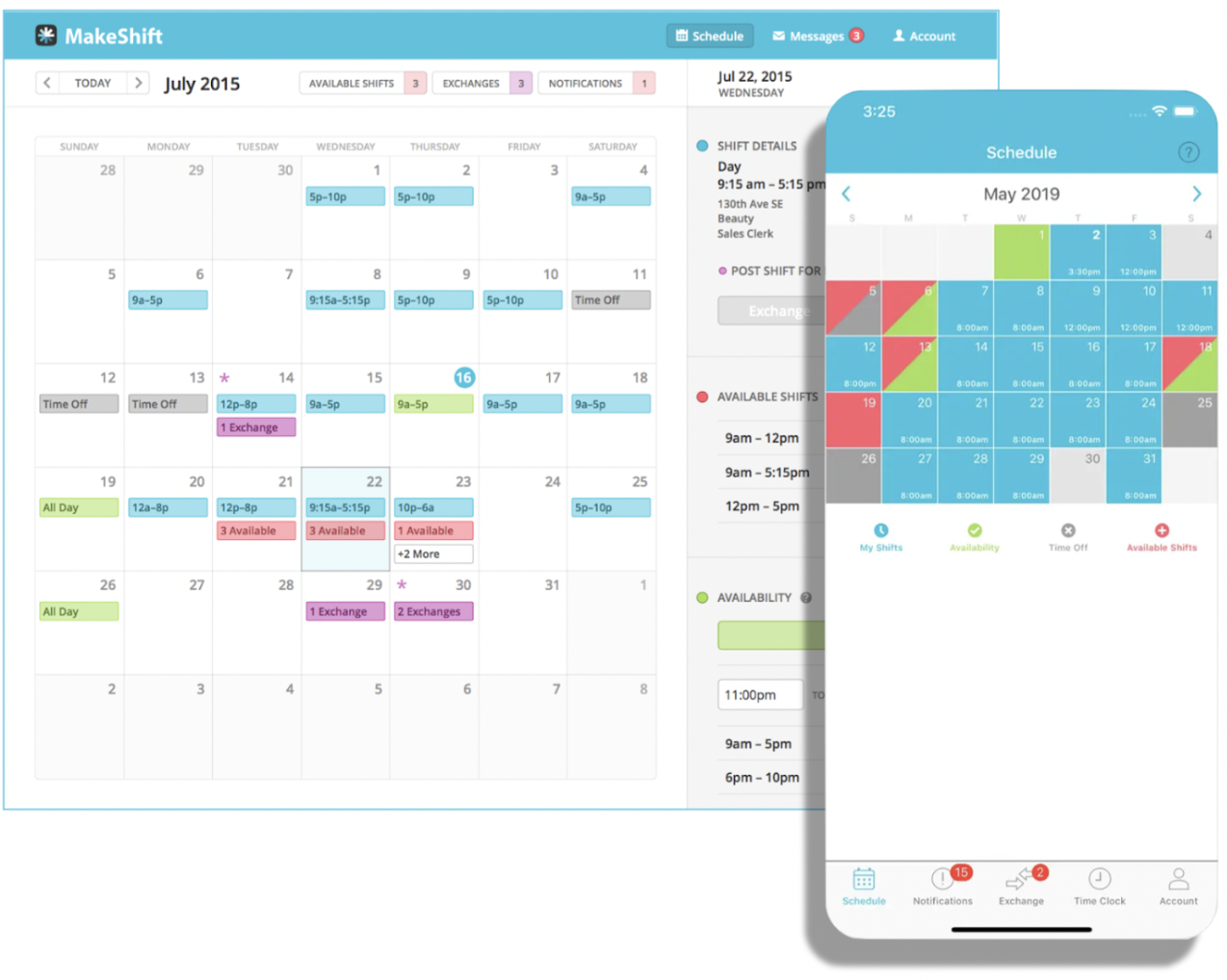
Modern staff scheduling software allows your nurses to view their schedules at any time on their mobile devices.
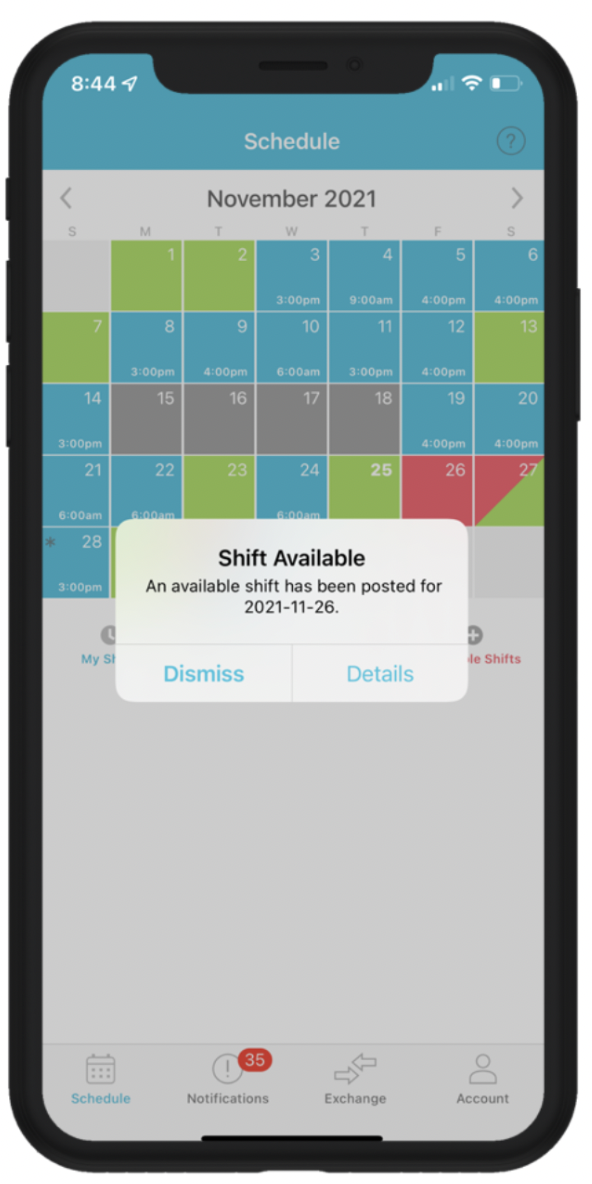
Furthermore, it enables your nurses to receive notifications when new shifts are available.
Scheduling software also lets you posts schedules well in advance. This way, your nurses can prepare ahead of time for upcoming work weeks.
Create Schedules Based on Preferences
The only way to create optimal schedules for your nurses is to let them set their preferred availability. MakeShift lets employees set their preferred times so scheduling managers can create schedules that cater to their wishes.
Through preference-based schedules, nurses can better manage work-life balance and provide better care to patients.
Manage Workloads
Unfortunately, the healthcare industry isn’t known to provide a quality work-life balance. However, you can prevent overworking your medical staff with staff scheduling software’s fatigue management rules.
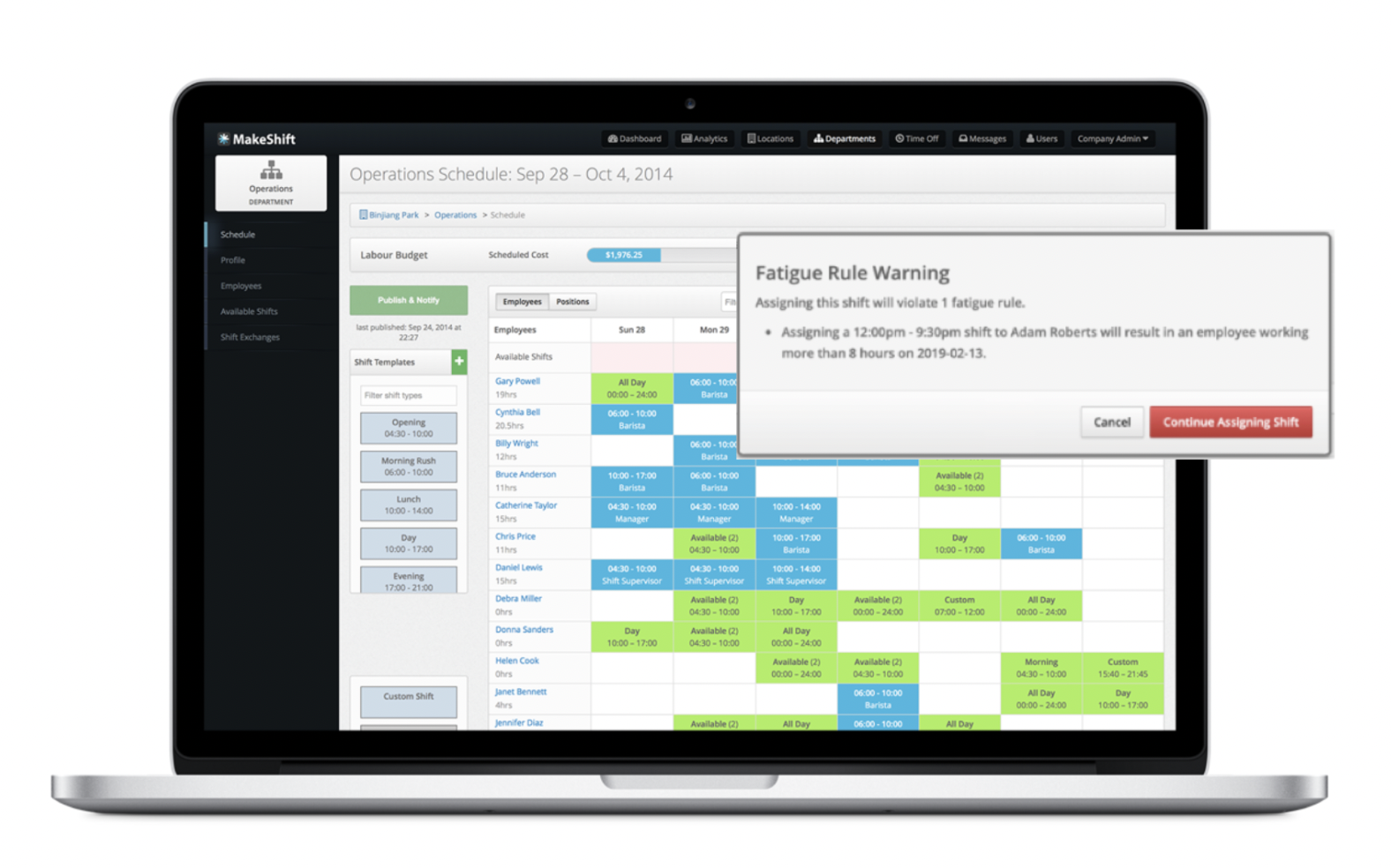
Fatigue management rules are preventative measures that appear when you schedule too many shifts for a nurse or have multiple shifts too closely together.
When this happens, a warning message will appear explaining you broke a fatigue management rule and to modify your existing schedule.
2. Provide Mental Help Support
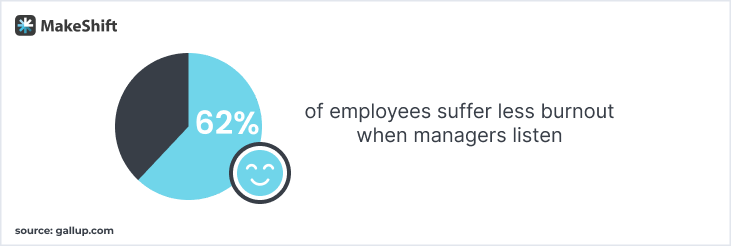
Listening to your staff and providing an outlet for mental health support is essential. A study conducted by Gallup found that 62% of employees suffer less burnout when managers listen.
Here are some protocols you can implement at your healthcare clinic:
- Create a safe space where nurses can open up and speak about anything, with no expectations or off-limit topics.
- Managers should share their own vulnerabilities and issues to create a two-way communication avenue.
- Acknowledge that burnout is common in healthcare, and they’re not alone.
- Let nurses talk without blaming them for their situations or rushing to provide a quick-fix solution.
- Involve nurses in policy-making discussions and let them share strategies for coping with and preventing burnout.
- Consistently check in with nurses, and don’t be afraid to guide them towards professional or other support systems in the organization.
You should also consider creating an employee wellness program. Employee wellness programs are a powerful way of maintaining your nurses’ well-being through activities such as one-off events and team building.
Wellness programs show that your organization helps nurses cope with the stressful pressures of work while showing you’re here for them.
3. Encourage Exercise and Healthy Eating Habits
Shift work is typically associated with unhealthy eating and obesity. Today’s nurses usually work in facilities that require 24-hour staffing and 10 to 12-hour shift coverage.
Because of this, your nurses may be unable to prepare healthy meals and find time for exercise. Therefore, your nurses may follow diets low in fruits, vegetables, and whole foods. Instead, they eat highly processed foods that lead to obesity and increase their risk for several chronic diseases.
Here’s how your healthcare organization can encourage a healthy lifestyle:
- Set up interventions that teach and encourage proper nutrition to promote healthy living and prevent disease.
- Make sure your nurses have adequate time to eat, use the bathroom, and take breaks.
- Give your nurses 15-minute breaks every 4 hours.
- Establish a cozy break room with healthy snacks.
In essence, your nurses must prioritize their personal physical and mental health to avoid burnout. To begin, nurses can engage in activities that build their resilience to the inevitable stressors of their chosen field of work.
For example, nurses can practice yoga, meditation, and journal writing to help release stress and work frustration. Nurses should also commit to nutritious eating and exercise routines that empower their wellness and keep them agile and productive.
4. Create a Supportive and Positive Work Environment
Work cultures that foster openness and empower nurses can successfully prevent burnout. The goal of your work culture is to create an environment where your staff feels comfortable being themselves.
Great managers build dedicated, highly cohesive teams with deep bonds. Your staff across your entire organization should be willing to help each other.
Furthermore, your organization should offer easy accessibility to resources and information that allows your nurses to perform their work better and grow professionally. Nurses want to feel valued for their hard work, and it’s your duty to offer the gratification they desire.
5. Set Guidelines for Measuring and Monitoring Staff Stress
To prevent nurse burnout, nurse leaders must understand the level of stress their nurses go through. This allows them to respond accordingly. Your healthcare organization can develop and implement better interventions by monitoring and measuring nurse stress.
You can utilize surveys asking nurses about their well-being, including their feelings towards burnout, professional satisfaction, and professional engagement. These surveys offer insight into how management can address burnout, leading to a happier workplace and better health for nurses and patients.
Put Your Nurses First with MakeShift
You have to remember your nurses are more than just employees. They have dedicated their lives to helping others. For this reason, you should offer your nurses the best tools to perform their jobs without stress and anxiety.
MakeShift is an innovative staff scheduling software that prevents nurse burnout. With MakeShift’s preference-based scheduling system, your nurses are empowered to set their own schedules and take control of their work-life balance.
Want to see how MakeShift can prevent buddy punching and time theft? Start your 14-day free trial today.
Ready to Make the Shift?




